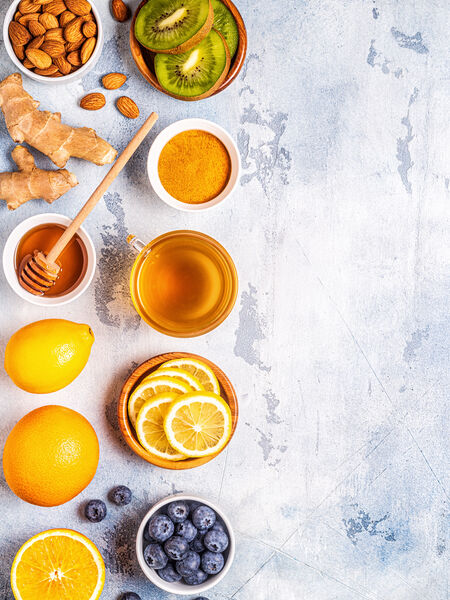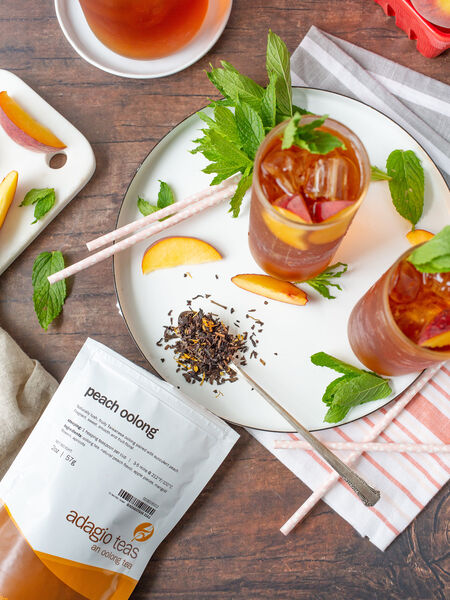New Year Goals: How Tea Can Help!


The best thing I heard this week was, “I don’t make New Year’s resolutions. I make New Year’s goals.”
That’s powerful for two reasons:
1) Accountability. Call something a “goal” and you either achieve it or you don’t.
2) Positive momentum. The word “resolution” implies that you’ve got a problem and you need to work on it. “Goal,” on the other hand, doesn’t care if you have a problem or not. You just need to achieve the dang thing.
(Man, do I love learning from my clients.)
One of the big things people are thinking about this New Year— as many of us are probably already counting on— is eating healthier as we transition through our various countries’ pandemic modes.
However, it becomes another language issue: “healthy” doesn’t sound fun to everybody. (It does to me, but I’m a proud, Grade A fitness nerd and don’t count in the consensus.) Therefore I find that one of the best ways to kick off new eating habits is to introduce people to things that are fun-colored, fun-flavored, and all around not the boring image that “healthy” food is supposed to be.
Enter tea magic.
How often have you heard “eat the rainbow” when it comes to selecting produce? It’s secretly nutritional shorthand for, “Make extra sure that you’re consuming enough antioxidants, vitamins, and minerals that they can balance out the stress levels you might be under just from dealing with this pandemic business.”
How? Because some of the most powerful fruits and veggies are also the most brightly colored, and not by accident! Nature-born pigmentation in produce is often a sign of nutritional potency, since certain antioxidants manifest as the deep, dark colors that make things like red kale and purple basil so enticing.
Now, so that you don’t have to worry about scouring science articles before you head out— with a mask! — on your next grocery trip, I’m going to give you the cheat sheet on these wonder- molecules and where to find them right here at Adagio. (Saves you the hassle of bundling up to go outside, right?)
Let’s start with anthocyanins. Oh, I love these guys. They’re a type of phenolic antioxidant called a “flavonoid,” and one that I consider the easiest antioxidant to spot from a mile away, because they’re responsible for giving red, blue, and purple fruits and vegetables their attractive hue.
They’re also one of the easiest to remember if you’ve ever messed with anything in Photoshop: cyan = blue. Antho-cyan-ins. Ta-da! Instant mnemonic. And you definitely want to remember these, because they’re well-studied and proven to be responsible for a host of health benefits, particularly lowering inflammation and improving cardiovascular function.
So how to get some primary-colored goodness in your system? Look no further than Adagio blends featuring red and blue players like Bella Luna Blue (always worth the wait, so definitely subscribe to Adagio updates!), Berry Blues, and White Strawberry Basil. I’d get extra excited about the last one, because basil by itself is already wonderful for reducing inflammation, so the extra help from white tea— which, since it comes from the true tea family of Camellia Sinensis, is surprisingly laden with anthocyanins despite its mild color— and strawberries will pack a pain-quelling punch.
Next up, we have beta carotene. This is another fun one because it conceals the associated colors within its name, take a look: beta carot-ene. What color are carrots? Orange! (Or yellow, or purple if they contain extra anthocyanins… but I digress.)
Beta carotene keeps your cells bright and healthy, and it is a necessary nutrient to produce vitamin A, which is one of those handy vitamins that reduces signs of aging— again, working to counter the unhappy effects of lifestyle stress. You can find it mostly in orange, deep yellow, and even green veggies.
So, as you can imagine, what’s the greenest veggie around? Green tea, of course! Pour yourself a cup or five of Adagio’s Gyokuro, Lemon Meringue Green, or Zheijiang Lung Ching for when you’re feeling extra on top of the world.
The last color-nutrient you should look out for is lycopene. Unfortunately I can’t give you a fun mnemonic for it— unless you want to try “Like-a-pain— tbrush of red,” but even I can tell you that’s reaching a little. It does get the job done, though: lycopene is associated with red fruits and vegetables like grapefruit, tomatoes, and— marigold!
Yep! You’ll be surprised to find lycopene in Adagio’s marigold teas like Arabica Lemon Turmeric, Peach Oolong, and Rooibos Pecan Turtle. Check out those gorgeous petal threads!
Now if you’ll excuse me, I’ve got some purple basil to get my hands on.
Cheers!
Natasha Nesic
NASM Certified Personal Trainer and Nutrition Coach, Founder of Work Life Fitness
